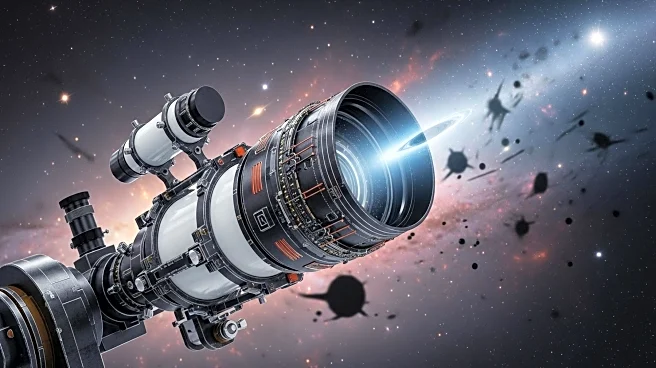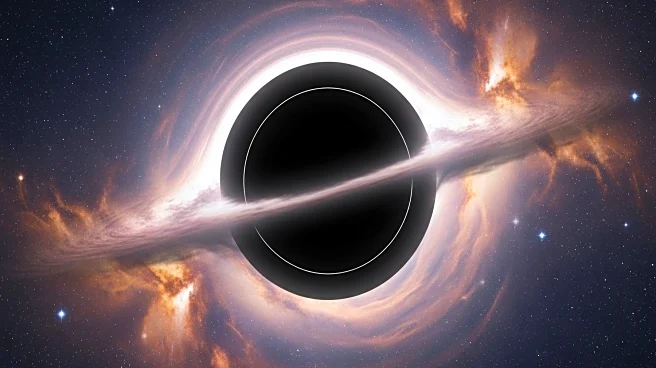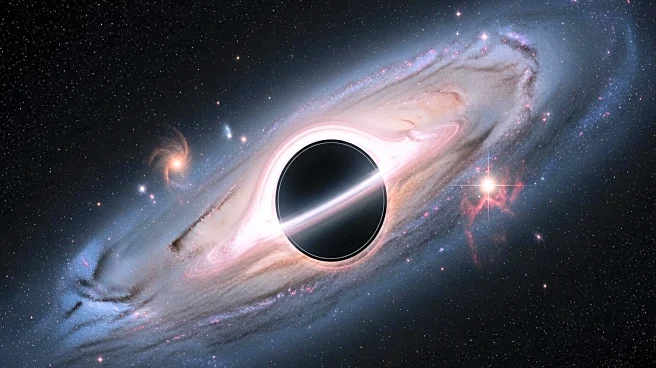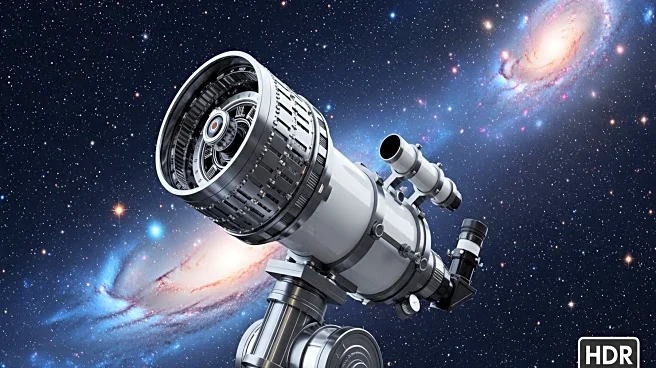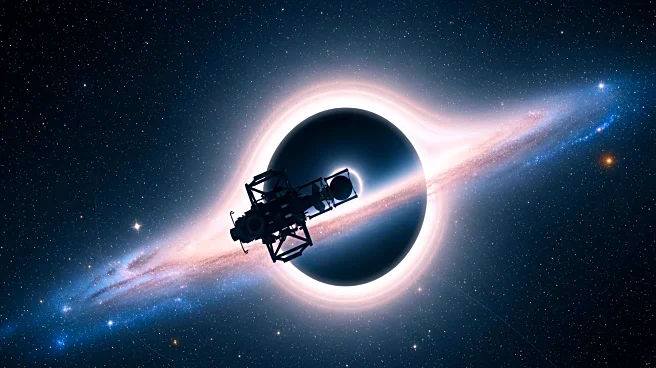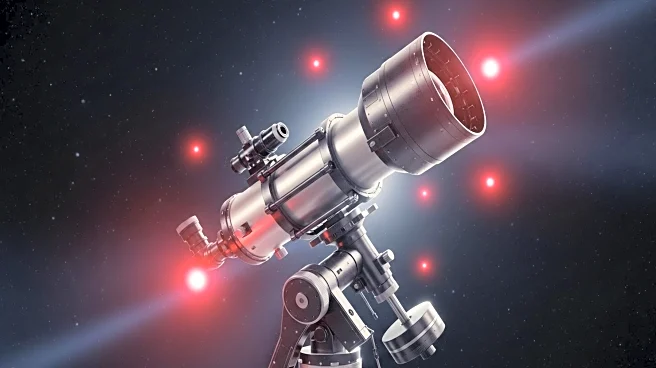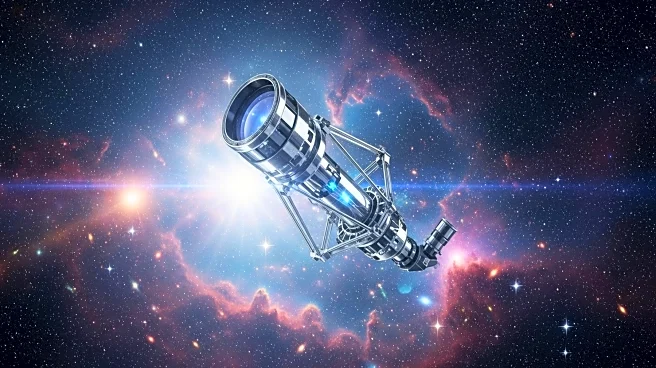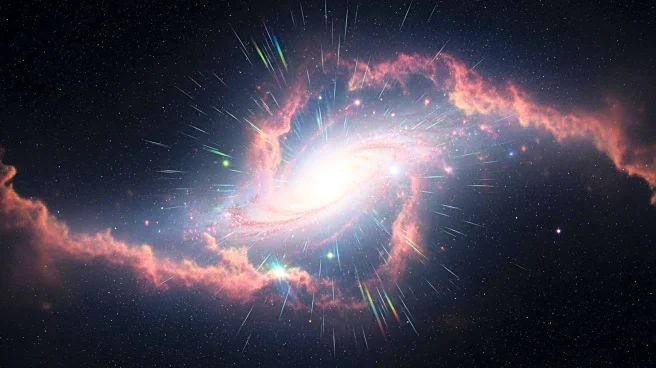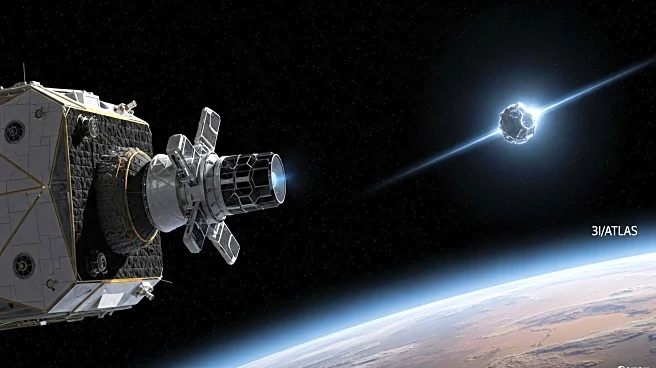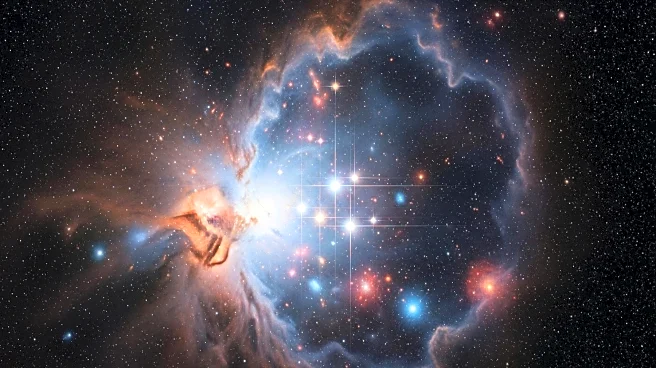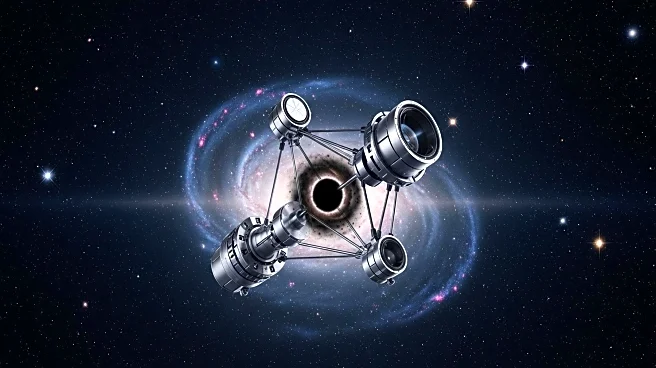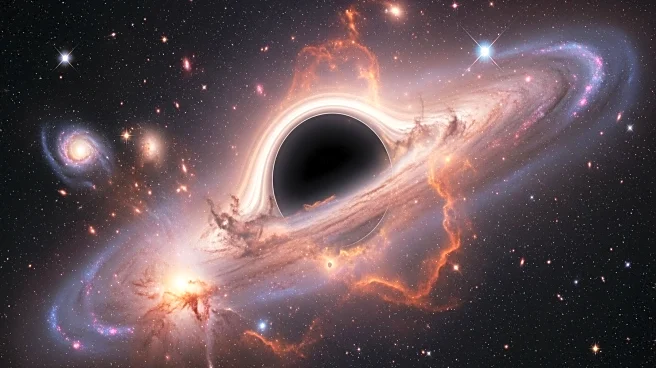What is the story about?
What's Happening?
Astronomers using NASA's James Webb Space Telescope have discovered mysterious objects in the early universe, termed 'black hole stars.' These objects appear as gigantic spheres of hot gas powered by supermassive black holes at their core, resembling star-like atmospheres around newborn black holes. The discovery offers potential insights into the formation of today's supermassive black holes. The findings were published in Astronomy & Astrophysics, highlighting the unique characteristics of these 'black hole stars,' which defy classification as ordinary galaxies. The research team, including Joel Leja and Bingjie Wang, suggests these objects could be the missing link in understanding the rapid growth of supermassive black holes in the young cosmos.
Why It's Important?
The discovery of 'black hole stars' is significant as it challenges existing models of early galaxy formation and provides new clues about the origins of supermassive black holes. Understanding these objects could reshape theories about the universe's evolution and the processes that led to the formation of massive cosmic structures. This breakthrough underscores the capabilities of the James Webb Space Telescope in exploring the universe's infancy and could lead to further discoveries that refine our understanding of cosmic history. The implications extend to astrophysics and cosmology, potentially influencing future research directions and technological advancements in space exploration.
What's Next?
Further analysis and observations are expected to validate the interpretation of these 'black hole stars' and explore their role in the universe's evolution. Astronomers may revise early galaxy formation models based on these findings, prompting new studies and discussions within the scientific community. The James Webb Space Telescope will continue to play a crucial role in uncovering more about these objects and their impact on cosmic development. As researchers delve deeper into the data, additional discoveries may emerge, offering a more comprehensive understanding of the universe's formative years.
AI Generated Content
Do you find this article useful?
